9452 A MOST UNUSUAL SET OF TEN SILK-MOUNTED ENGRAVINGS DEPICTING THE LIFE STAGES OF MAN BETWEEN TEN AND ONE HUNDRED YEARS OF AGE German. Early 18th Century. Measurements: Width: 8 1/2″ (21.5 cm) Depth: 3/4″ (2cm) Height: 12″ (30cm)
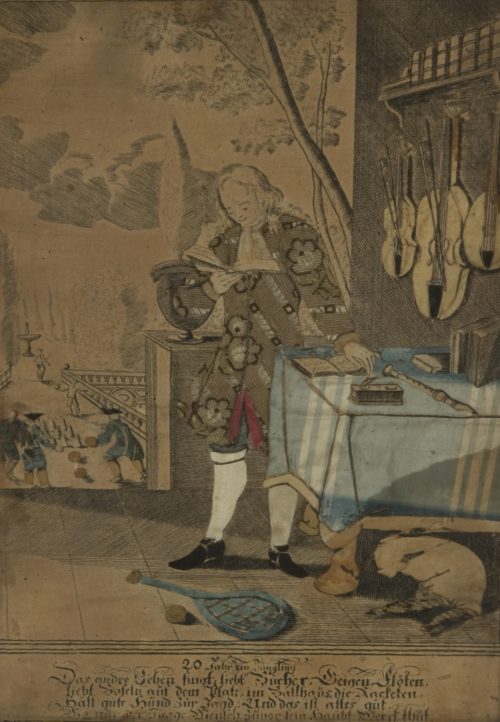
-
Figure 1
-
Figure 2
Research
Each engraved image highlighted with various colored silks. All inscribed at the base with German archaic printed script describing the content of each image.
Provenance:
Tomas Serra Orribe, Buenos Aires, Argentina, 1996.
Developed in Northern Europe, the depiction of the various ages (or stages) of man has been a popular subject throughout time, particularly in the medieval and renaissance periods in association with beliefs about death and dying. “The earliest broadsides were printed for a popular audience, to appeal to their fears about life and death; sin and salvation; and stimulate the belief in a moral life.”1
By the 16th century this theme served as a model for proper conduct. The standard motif for depicting the ages of man was a stepped bridge or arch, with each personification on a different level, as seen in a 1540 engraving of The Ten Ages of Man by Jörg Breu the Younger of Augsburg (figure 1). “Made to adorn the homes of good burghers, the German Lebenstreppe (“stairway of life”) aimed to teach a lifetime of probity and self-discipline in the face of death and divine judgement,”2 with an “ideal self” presented at each age.
Following the Thirty Years War and the scientific revolution, the ages of man motif became truly popular in the 18th and 19th centuries, “providing a visual antidote to the fear of disarray and disintegration typical of the sixteenth and early seventeenth centuries,”3 instead teaching a new philosophy that each age had its necessary place in the cycle of life.
The present engravings depict the life stages of man between the ages of ten and one hundred. The titles below the images identify and describe each stage as follows:
10th year, a child
20th year, a youth
30th year, a man
40th year, he prospered
50th year, he stands still
60th year, he begins to age
70th year, an old man
80th year, he will never be wise
90th year, the children’s ridicule
100th year, God have mercy
Underneath the titles, each image is further accompanied by a rhyming verse. The same titles appear on a group of woodcuts after the German engraver Tobias Stimmer, circa 1580, in the British Museum, as well as a German enameled Humpen (type of tankard) in the Corning Museum of Glass dating from the 16th or 17th century (figure 2).
The addition of colored silks over the engraved ground of the present pieces is an extremely unusual and inventive conceit, and this set was much admired by the Victoria & Albert Museum textile department, who found them to be possibly unique.
Footnotes:
1. Melby, Julie L. Resist the devil and he will fly far from you. Graphic Arts: Exhibitions, acquisitions, and other highlights from the Graphic Arts Collection, Princeton University Library. The Trustees of Princeton University, 2012.
http://blogs.princeton.edu/graphicarts/2011/04/resist_the_devil_and_he_will_f.html
2. Cole, Thomas R. The Journey of Life: A Cultural History of Aging in America. Cambridge [England: Cambridge University Press, 1992. 19.
3. Ibid., 28.
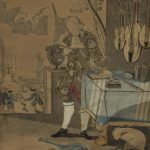

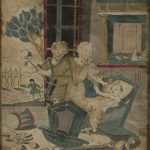
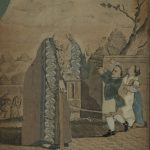
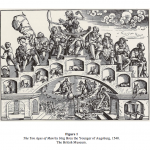
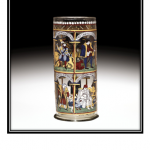
Comments are closed.